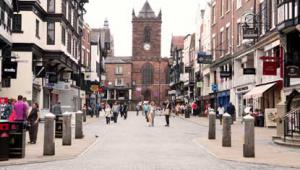The UK economy grew by 0.5% in the three months to September, according to the first estimate from the Office for National Statistics.
The rise is stronger than expected after the second quarter figure was revised down to 0.1%.However, economists warned that today’s estimate could also be amended downwards, and that growth in the last quarter of this year could be ‘dismal’.
A preliminary estimateof gross domestic product growth from the ONS shows that the service sector provided the most growth, with a 0.7% expansion for the quarter. However, output from the construction sector decreased by 0.6%.
Growth due to government spending also increased, up by 0.5% in the quarter, higher than the 0.2% recorded in the three months to June despite the government’s spending cuts.
The ONS said there was no evidence to suggest that the riots in August had any significant impact on growth. However, the estimate was ‘complicated’ by ‘special events’ in the second quarter, including the additional bank holiday in April for the royal wedding.
The figures for the past four quarters, from October 2010, should be examined together, as they all involved special events, the ONS said. For example, severe winter weather last December hit growth in both the final quarter of last year and the first quarter of this year.
For the year to the end of September, the UK’s output increased by 0.5%, ‘a significant slowdown’ from the 2.6% growth in the previous 12 months.
The Centre for Economics and Business Research said the figures showed a ‘surprise’ strength in quarterly GDP growth.
Managing economist Charles Davis said he ‘had expected growth to be far lower’ and that ‘on the face of it, this is better-than-expected news’.
However, Davis also warned that this preliminary estimate could be subject to revision.
Particularly, he said that the ONS estimate of the growth from the service sector was ‘surprisingly high’ given the turbulence in the financial sector.
He added that the continued growth in output from government spending was also a ‘slightly surprising result when public sector cuts are thought to be beginning in financial year 2011/12’.
Davis added that ‘backward-looking data are always less relevant than the latest forward-looking indicators’.
He said: ‘While the third quarter looks better than
expected for now, the real worry is the UK’s performance in the fourth quarter –
which is presumably why the Bank of England felt compelled to inject an additional £75bn into the
economy in October.’
David Kern, chief economist
at the British Chambers of Commerce, also welcomed the ‘better than expected’
figures.
However, he added: ‘Over the past year growth has been relatively weak at only 0.5%, but it is reassuring that fears of a recession have so far been unfounded.’
He stressed that ‘there are still risks ahead’ and called on the Treasury to make use of its ‘considerable flexibility’ while sticking to its deficit-reduction plan, including taking steps to ease the flow of credit to business.
Trades Unions Congress general secretary Brendan Barber argued that the figures showed that the government’s austerity programme ‘has choked off what was always going to be a slow and difficult recovery’.
He said: ‘This was meant to be the quarter when the UK economy started bouncing back, but that hasn’t happened. You have to go back nearly a century to find a slower recovery from a crash.’
Unison said that the figures were ‘dismal’. General secretary Dave Prentis said: ‘Public sector cuts are not being offset by private sector growth, and all across the country, people are really struggling.’





















